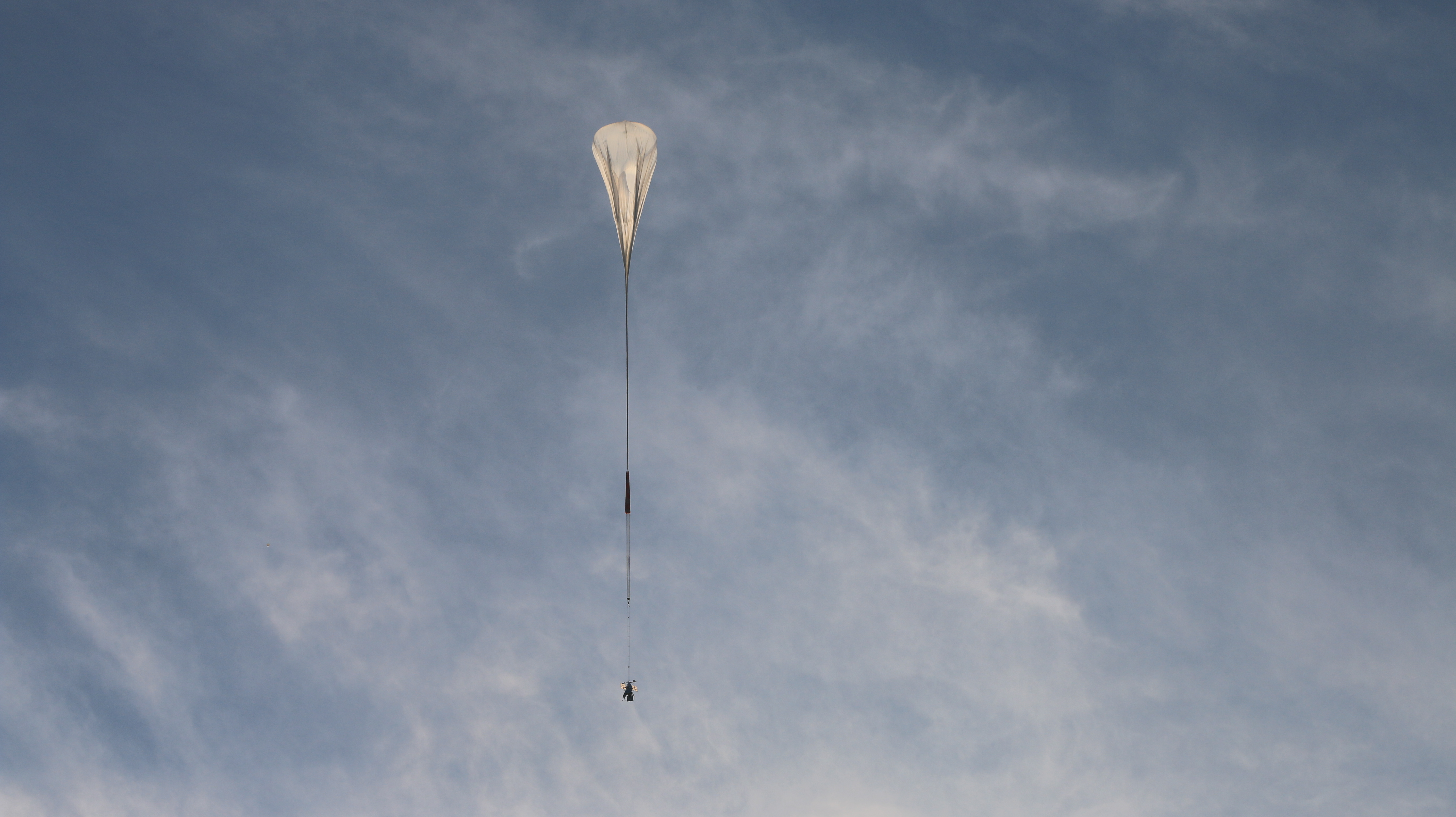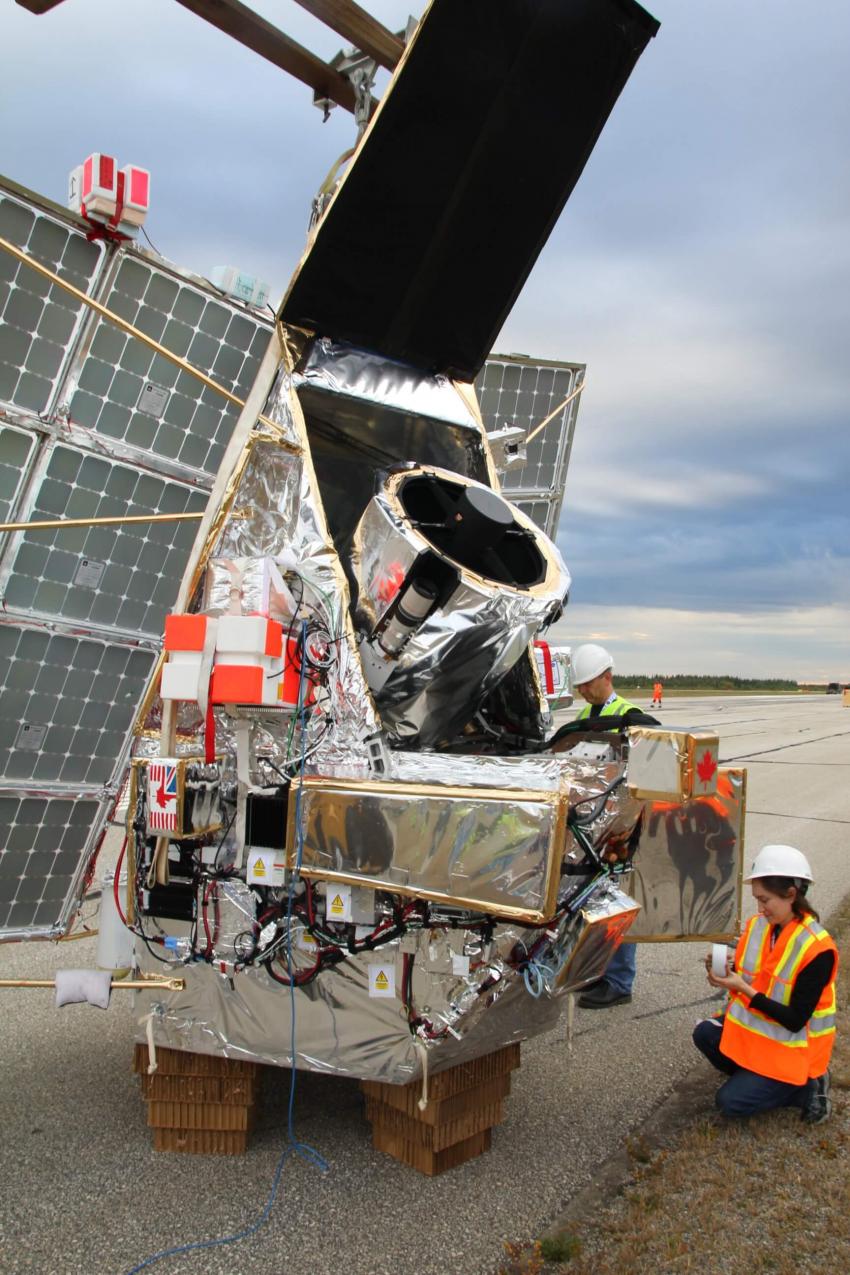Meet SuperBIT, the next-generation space telescope that rides above the clouds on a balloon
SuperBIT might be the next best thing in astronomy.
A new type of space telescope could soar high above Earth's clouds to view the universe in a more environmentally-friendly and upgradable way than current technologies.
The Superpressure Balloon-borne Imaging Telescope (SuperBIT) was announced on Tuesday (July 20) by the Royal Astronomical Society (RAS). Its creators include researchers from Durham University in the United Kingdom, Princeton University and the University of Toronto in Canada, who partnered with NASA and the Canadian Space Agency.
The team's claims about SuperBIT indicate that this novel space telescope might be the next best thing in astronomy. "New balloon technology makes visiting space cheap, easy and environmentally friendly," Mohamed Shaaban, a doctoral student at the University of Toronto, said in the announcement. Shaaban described SuperBIT on Wednesday (July 21) at the virtual RAS National Astronomy Meeting (NAM 2021).
Related: The best Hubble Space Telescope images of all time!
SuperBIT's helium balloon is one of the showstopping new technologies the project incorporates. The balloon is the size of a football stadium, according to the statement, with a volume of 695,830 cubic yards (532,000 cubic meters). The floating orb is powerful enough to carry a telescopic mirror to an altitude of about 25 miles (40 kilometers), about the same altitude as the top of Earth's stratosphere.
That altitude is important because while Earth's atmosphere is a crucial part of our planet, it does interfere with astronomical observations, blurring precious images. Reaching the top of the stratosphere would allow astronomers to observe the universe with little to no interference from the atmosphere. Unlike current balloons, SuperBIT also boasts a "superpressure" balloon that can keep the telescope aloft high in the sky for months at a time instead of days.
The perks continue with its imaging capabilities. SuperBIT's final test flight in 2019 showed that it can stay on its observation target with "variation of less than one thirty-six thousandth of a degree for more than an hour," according to the statement. This should enable SuperBIT to get high-resolution images equal or better to those from the iconic Hubble Space Telescope. The first SuperBIT flight will carry a telescope with a 19.7-inch-wide (0.5 meters) mirror, but a design upgrade will include a 39.4-inch (1.5 m) aperture and this could make SuperBIT "even better than Hubble," the scientists hope.
Breaking space news, the latest updates on rocket launches, skywatching events and more!
The balloon-lofted model makes upgrades easier to perform, too. Teams using SuperBIT could swap out the telescope's cameras or instruments with updated versions. Unlike traditional space telescopes, SuperBIT returns to Earth periodically so it wouldn't be locked to a certain type of hardware in perpetuity. "SuperBIT can be continually reconfigured and upgraded," said Shaaban.
Balloons don't require rocket fuel, making them more environmentally friendly than fuel-based lifting procedures. They are also cheaper than similar satellites, according to the statement. "With a budget for construction and operation for the first telescope of $5 million (£3.62 million), SuperBIT cost almost 1,000 times less than a similar satellite," RAS officials said in the statement.
SuperBIT's first operational flight is currently scheduled for April 2022. It will lift off from Wanaka, New Zealand, and circumnavigate Earth several times to take images of the night sky; during the day, it will recharge its batteries using solar panels.
Follow Doris Elin Urrutia on Twitter @salazar_elin. Follow us on Twitter @Spacedotcom and on Facebook.

Doris is a science journalist and Space.com contributor. She received a B.A. in Sociology and Communications at Fordham University in New York City. Her first work was published in collaboration with London Mining Network, where her love of science writing was born. Her passion for astronomy started as a kid when she helped her sister build a model solar system in the Bronx. She got her first shot at astronomy writing as a Space.com editorial intern and continues to write about all things cosmic for the website. Doris has also written about microscopic plant life for Scientific American’s website and about whale calls for their print magazine. She has also written about ancient humans for Inverse, with stories ranging from how to recreate Pompeii’s cuisine to how to map the Polynesian expansion through genomics. She currently shares her home with two rabbits. Follow her on twitter at @salazar_elin.


